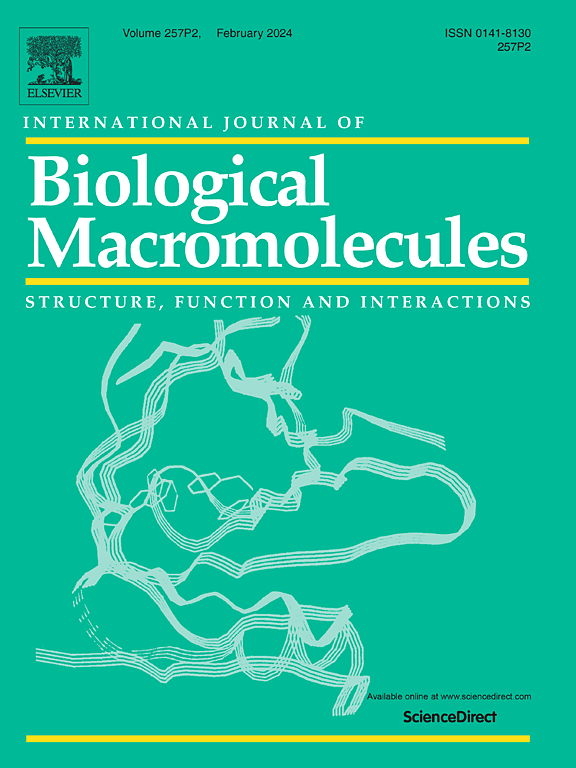Near-infrared light-triggered silk fibroin hydrogels integrated with polydopamine-modified nanoparticles for enhanced wound healing and infection control
IF 7.7
1区 化学
Q1 BIOCHEMISTRY & MOLECULAR BIOLOGY
International Journal of Biological Macromolecules
Pub Date : 2025-04-02
DOI:10.1016/j.ijbiomac.2025.142814
引用次数: 0
Abstract
This study presents the development and evaluation of a novel silk fibroin (SF)-based hydrogel composite, SiPDA/Ag-C, enhanced with polydopamine (PDA)-modified silver nanoparticles (Ag@PDA) and PDA-modified curcumin (Cur-PDA), for skin wounds treatment and infection control. Dopamine readily oxidizes and reacts with SF to form hydrogels. By in-situ synthesizing silver nanoparticles (Ag NPs) on the surface of PDA nanospheres, Ag@PDA achieves a dual antibacterial effect. It combines the photothermal antibacterial property of PDA with the ability of Ag NPs to disrupt bacterial membranes and DNA. Coating PDA on the surface of curcumin creates Cur-PDA nanoparticles, which not only enhance curcumin's bioavailability but also integrate curcumin's anti-inflammatory and antioxidant properties with PDA's antioxidant and photothermal antibacterial capabilities. Combining Ag@PDA and Cur-PDA into the SF hydrogel matrix results in the SiPDA/Ag-C hydrogel. The hydrogel leverages the photothermal properties of PDA to achieve non-invasive wound healing under near-infrared (NIR) light irradiation. The SiPDA/Ag-C hydrogel could significantly inhibit the growth of Staphylococcus aureus and Escherichia coli in vitro and in vivo, and promote wound healing by reducing inflammation, enhancing antioxidant capacity, and stimulating tissue regeneration. In vivo study shows that compare with the treatment of SiPDA/Ag-C hydrogel alone, the combined treatment with NIR irradiation could significantly inhibit bacterial growth and improve tissue repair. The hydrogel also exhibited excellent biocompatibility, biodegradability, and minimal cytotoxic effects, making it a promising candidate for advanced wound care and tissue engineering applications.
求助全文
约1分钟内获得全文
求助全文
来源期刊
CiteScore
13.70
自引率
9.80%
发文量
2728
审稿时长
64 days
期刊介绍:
The International Journal of Biological Macromolecules is a well-established international journal dedicated to research on the chemical and biological aspects of natural macromolecules. Focusing on proteins, macromolecular carbohydrates, glycoproteins, proteoglycans, lignins, biological poly-acids, and nucleic acids, the journal presents the latest findings in molecular structure, properties, biological activities, interactions, modifications, and functional properties. Papers must offer new and novel insights, encompassing related model systems, structural conformational studies, theoretical developments, and analytical techniques. Each paper is required to primarily focus on at least one named biological macromolecule, reflected in the title, abstract, and text.

 求助内容:
求助内容: 应助结果提醒方式:
应助结果提醒方式:


